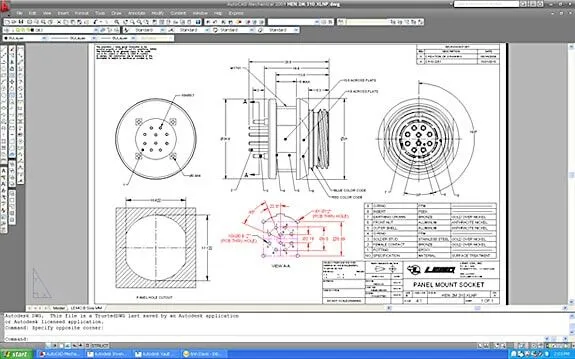BIM Technology Supports Better Building Decisions
BIM Technology Supports Better Building Decisions
BIM technology has been used to transform the way buildings are designed and constructed. Today, in the post-construction phases of a building’s lifecycle, BIM technology is also being used to provide accurate, timely and relevant information. BIM technology for facility management has the potential to dramatically improve the effectiveness of building lifecycle management.
The challenge is bringing the information needed for building design and construction into a context that is useful for the daily effective facility management.
What is BIM Technology?
At its most basic, BIM technology encompasses two key attributes:
- Object intelligence: the ability to associate material and assembly data with graphic elements.
- Three dimensions: complete three-dimensional graphic representation of buildings.
How Does BIM Support Better Decisions?
Technology that enables designers to model structures before they are built can enable savings in both cost and time. With BIM tools, architects, engineers, and building owners can explore multiple options when planning for or manage facilities, infrastructure, and environment. By creating a virtual model and applying differing techniques, materials, and designs, prior to the beginning of construction, reliable predictions can be made about cost, functionality, stability and more. This type of predictive technology can enable:
- Improved business practices
- Cost avoidance
- Reduced design time
- Cost-effective integration of BIM with GIS-based technology for land use
How Does BIM Benefit Facilities Management?
- Preventive maintenance – BIM construction models contain Information about building mechanical equipment. This information can be used to create a database for monitoring and scheduling ongoing preventive maintenance. Equipment that requires regular inspection and upkeep, particularly heating, ventilation and air conditioning equipment and life safety systems, are of particular significance. Additionally, information about air and electrical distribution systems that undergo periodic modification are valuable to facility managers.
- Space management – 3D BIM models provide a useful starting point for space and occupancy management. Furniture can be arranged, departments organized to make the best use of space. In addition, integrating building data with human resources data can enable organizations to reduce vacancy and ultimately achieve major reductions in real estate expenses.
- Energy efficiency initiatives – BIM aids in improving energy performance in commercial and industrial buildings by analyzing and comparing different options for energy use. This is important because, in many countries, commercial buildings are responsible for 20 percent or more of the total energy consumption.
- The base of ongoing changes – Managing accurate building records and drawings is a challenge for building owners and facility managers – from the “as-built” drawings through changes made as various tenants come and go or building restorations occur, BIM technology can make the updating and maintaining of current information easier. This is because of the three-dimensional aspects of BIM, which is important for representing mechanical systems, as well as because of the large amounts of data that BIM can support about assemblies, finishes, equipment and more.
BIM Technology Going Forward
Today, most stakeholders understand the implications and possibilities enabled by using BIM as a tool to facilitate information flow and support better decision-making throughout the building lifecycle. Sustainability has raised the profile of building lifecycle management. Building owners realize that BIM FM management makes sense both economically and ecologically.
BIM technology can manage relevant data about current building conditions and facilitates the analysis of alternatives. Today, some building design professionals even include data on life expectancy and replacement costs in their BIM models, in order to help the building owner understand the benefits of investing in materials and systems that may cost more initially but have a better payback over the life of the building.
Each building owner and stakeholder tends to view the problems and the potential solutions of each building from their own unique perspective. In some ways, BIM can even help to bring these differing viewpoints together to provide best practices in facilities management.
Recent Posts


The Key To Be Within Regulations And Ahead On The Racetrack
Whether to improve the car’s aerodynamics or make the driver’s experience more comfortable in the cockpit, WTRAndretti’s engineers have decided to trust and rely on Creaform’s expertise and technology.

CAD Outsourcing Doesn’t Have to Be Done In India
CAD Outsourcing Doesn’t Have to Be Done in India Do a Google search for “CAD Outsourcing” and what you’ll find is lots of firms located in India, which is fine if you’re prepared to go off-shore for CAD services. But what if your U.S. based company prefers to stay a...

AutoCAD Fiber Optic Designs & Drawings
Before proceeding forward in explaining the affinity between AutoCAD and Fiber Optic, it would be prudent to rationalize the utility of optical cables. When communicating between systems, either via the internet or via an internal network system, a medium needs to be...
